See also
- Silk Road (disambiguation)
- Maritime Silk Route Museum, Guangdong Province, China
The Maritime Silk Road is the maritime portion of the historic Silk Road.
Maritime Silk Road may also refer to:

The Silk Road was a network of Eurasian trade routes active from the second century BCE until the mid-15th century. Spanning over 6,400 kilometers, it played a central role in facilitating economic, cultural, political, and religious interactions between the East and West. First coined in the late 19th century, the name "Silk Road" has fallen into disuse among some modern historians in favor of Silk Routes, which more accurately describes the intricate web of land and sea routes connecting East and Southeast Asia, the Indian subcontinent, Central Asia, the Middle East, East Africa and Europe.

A trade route is a logistical network identified as a series of pathways and stoppages used for the commercial transport of cargo. The term can also be used to refer to trade over bodies of water. Allowing goods to reach distant markets, a single trade route contains long-distance arteries, which may further be connected to smaller networks of commercial and noncommercial transportation routes. Among notable trade routes was the Amber Road, which served as a dependable network for long-distance trade. Maritime trade along the Spice Route became prominent during the Middle Ages, when nations resorted to military means for control of this influential route. During the Middle Ages, organizations such as the Hanseatic League, aimed at protecting interests of the merchants and trade became increasingly prominent.
The Silk Road is a number of trade routes across the Afro-Eurasian landmass.
Maritime may refer to:

Tambralinga was an Indianised kingdom located on the Malay Peninsula, existing at least from the 10th to 13th century. It was under the influence of Srivijaya for some time, but later became independent from it. The name had been forgotten until scholars recognized Tambralinga as Nakhon Si Thammarat. In Sanskrit and Prakrit, tām(b)ra means "copper", "copper-coloured" or "red" and linga means "symbol" or "creation", typically representing the divine energy of Shiva.

The Port of Shanghai, located in the vicinity of Shanghai, comprises a deep-sea port and a river port.
Port of Guangzhou is the main seaport of Guangzhou city, Guangdong province, China. The port is operated by Guangzhou Port Group Co. Ltd which is a state owned company. The company was established on February 26, 2004 from the former Guangzhou Harbor Bureau. It was approved by the Guangzhou Municipal Government. It is currently the largest comprehensive port in South China. Its international maritime trade reaches over 300 ports in more than 80 countries and districts worldwide. The port also incorporates the former Huangpu Port.
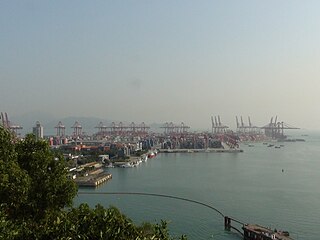
The Port of Shenzhen is a collective name of a number of ports along parts of the coastline of Shenzhen, Guangdong Province, China. These ports as a whole forms one of the busiest and fastest growing container ports in the world.

The Port of Ningbo-Zhoushan is a port that is the busiest in the world in terms of cargo tonnage. It handled 888.96 million tons of cargo in 2015. The port is located in Ningbo and Zhoushan, on the coast of the East China Sea, in Zhejiang province on the southeast end of Hangzhou Bay, across which it faces the municipality of Shanghai.
The Port of Qingdao is a seaport on the Yellow Sea in the vicinity of Qingdao (Tsingtao), Shandong Province, People's Republic of China. It is one of the ten busiest ports in the world.
Subashi may refer to:
The Arctic Policy of China outlines China's approach to foreign relations with Arctic countries as well as its plans to develop infrastructure, extend military capabilities, conduct research, and excavate resources within the Arctic Circle. A major component of this plan is to build a Polar Silk Road, a network of trade routes through the Arctic to help expedite global shipping delivery.
New Silk Road can refer to:

Silk Roads: The Routes Network of Chang'an-Tian Shan Corridor is a UNESCO World Heritage Site which covers the Chang'an-Tianshan portion of the ancient Silk Road and historical sites along the route. On June 22, 2014, UNESCO designated a 5,000 km stretch of the Silk Road network from Central China to the Zhetysu region of Central Asia as a World Heritage site. The corridor spans China, Kazakhstan and Kyrgyzstan and includes 33 new sites and several previously designated heritage sites.
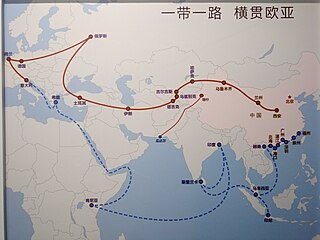
The 21st Century Maritime Silk Road, commonly just Maritime Silk Road (MSR), is the sea route part of the Belt and Road Initiative which is a Chinese strategic initiative to increase investment and foster collaboration across the historic Silk Road.
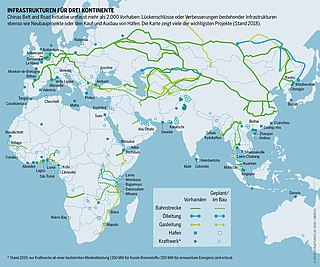
The Belt and Road Initiative, formerly known as One Belt One Road or OBOR for short, is a global infrastructure development strategy adopted by the Chinese government in 2013 to invest in nearly 70 countries and international organizations. It is considered a centerpiece of the Chinese leader Xi Jinping's foreign policy. The BRI forms a central component of Xi's "Major Country Diplomacy" strategy, which calls for China to assume a greater leadership role for global affairs in accordance with its rising power and status. As of March 2022, 146 countries were listed as having signed up to the BRI.
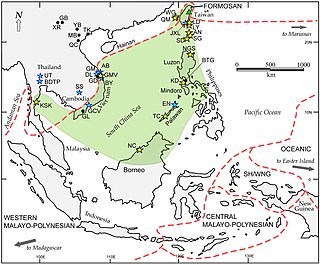
Philippine jade Culture or Jade Artifacts, made from white and green nephrite and dating as far back as 2000–1500 BC, have been discovered at a number of archeological excavations in the Philippines since the 1930s. The artifacts have been both tools like chisels, and ornaments such as lingling-o earrings, bracelets and beads.

Shekou is an area at the southern tip of Nanshan District, Shenzhen, Guangdong Province, China. It faces Yuen Long, Hong Kong across the Shenzhen Bay. It has been designated as a Free Trade Zone by the government, alongside Qianhai, Hengqin and Nansha New Area.
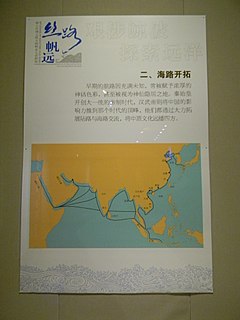
The Maritime Silk Road or Maritime Silk Route is the maritime section of the historic Silk Road that connected Southeast Asia, China, the Indian subcontinent, the Arabian peninsula, Somalia, Egypt and Europe. It began by the 2nd century BCE and flourished later on until the 15th century CE. The Maritime Silk Road was primarily established and operated by Austronesian sailors in Southeast Asia, Tamil merchants in India and Southeast Asia, and by Persian and Arab traders in the Arabian Sea and beyond. The network followed the footsteps of an older maritime network, the Maritime Jade Road of Taiwan and maritime Southeast Asia, as well as the maritime spice networks of Southeast Asia, Sri Lanka, India, and the Indian Ocean, coinciding with these ancient maritime trade roads by the current era.